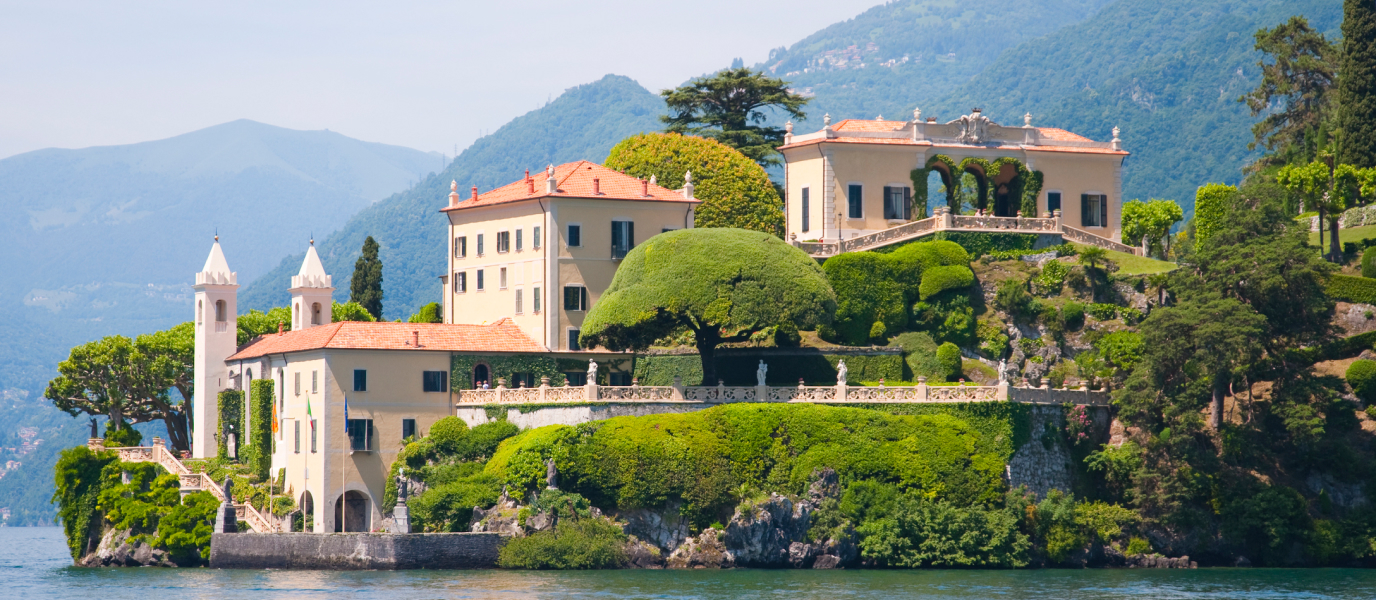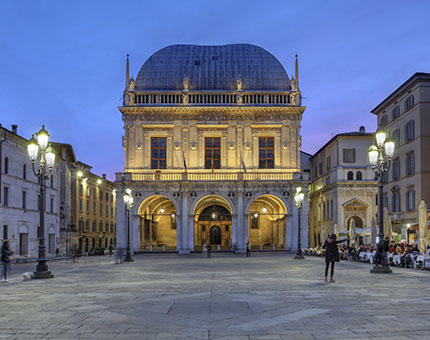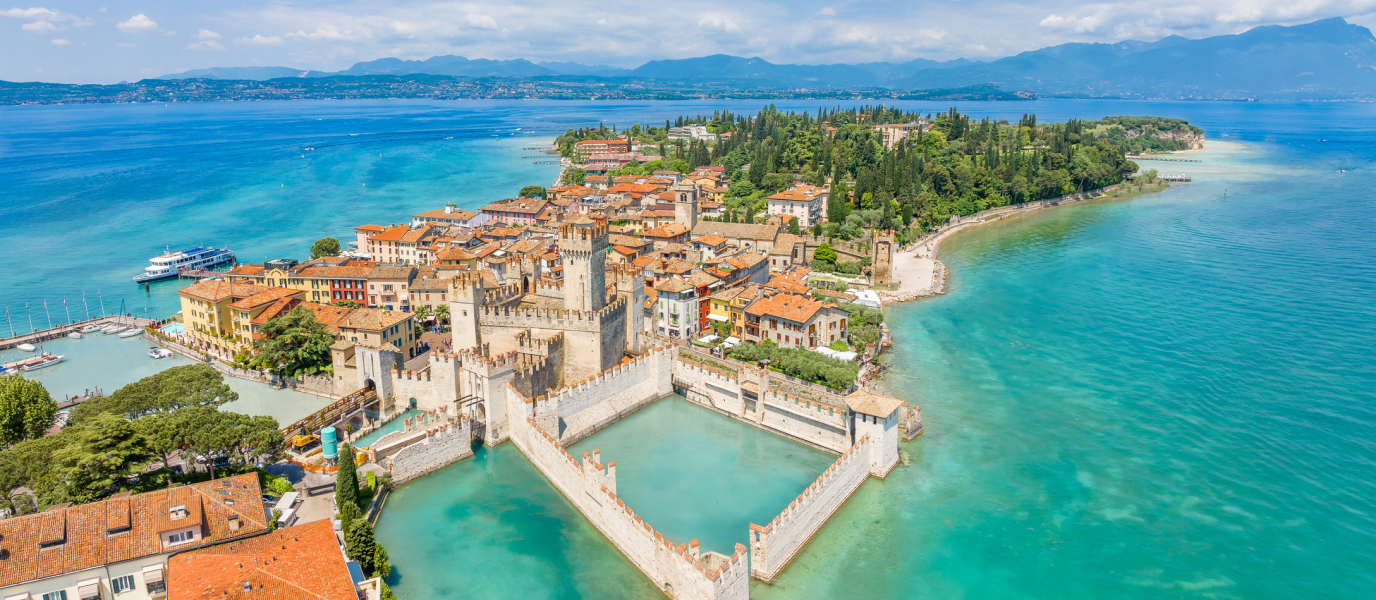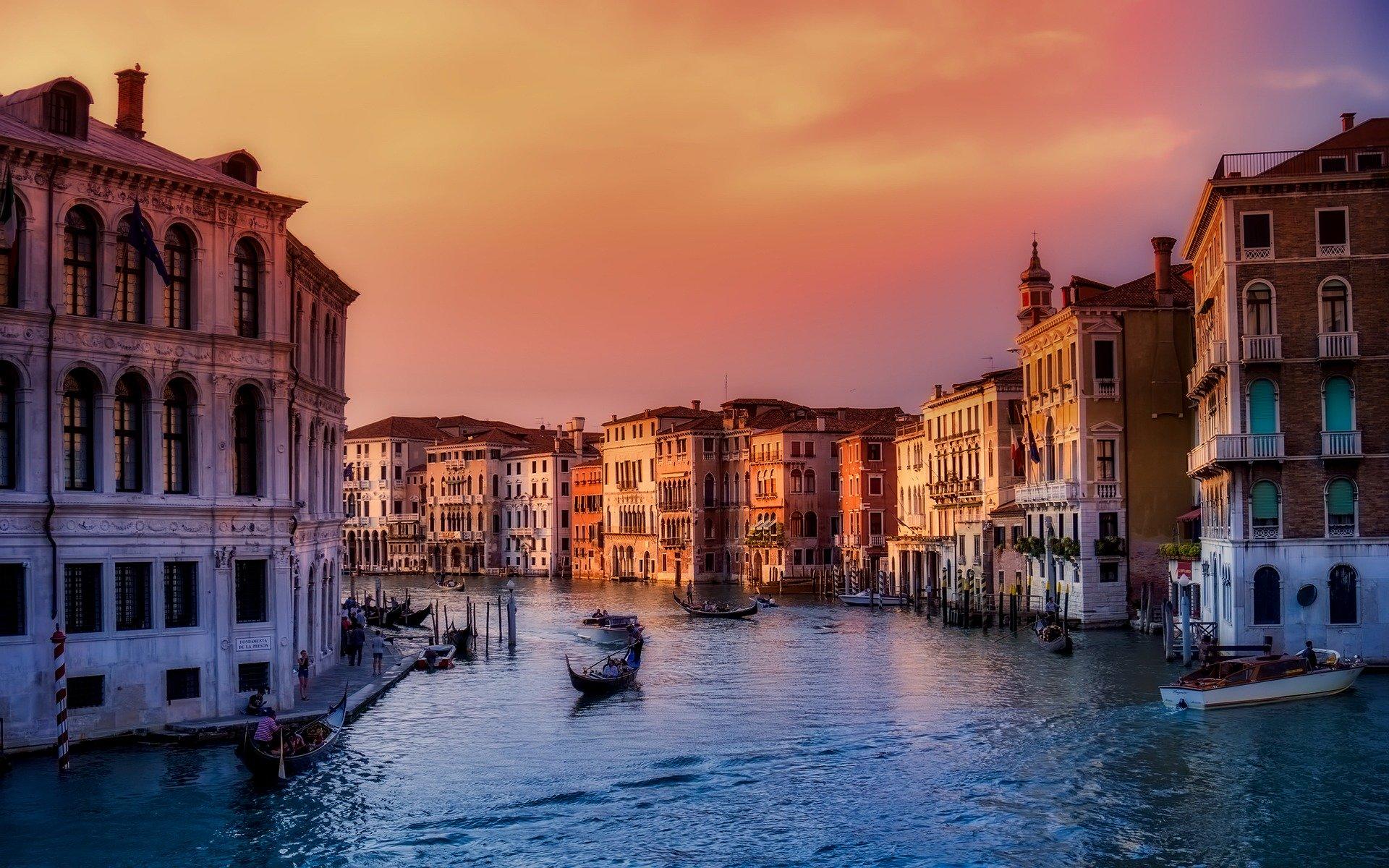Lake Maggiore, one of northern Italy’s most awe-inspiring lakes, has inspired artists and famous people throughout its history. A place well worth visiting and, thanks to its proximity to Milan and to Malpensa airport, it makes for an ideal, straightforward excursion.
Lake Maggiore is Italy’s second-largest lake, after Lake Garda. Covering 212 km2; it measures 54 kilometres at its longest point and has a maximum width of 10 kilometres. With a total perimeter of 170 kilometres, the lake extends from the northern Italian regions of Piedmont and Lombardy down into the south of Switzerland — in fact, around 20% of it lies in Switzerland.
Like other lakes in northern Italy, its beauty and the peacefulness of its setting are incomparable, and thousands of people are drawn to visit every year by the loveliness of the lake itself — and by the architecture of the towns and villages that surround it.
Lake Maggiore is of glacial origin, and its northern shores are surrounded by the Lepontine Alps, whose nearby peaks reach an altitude of 2,000 metres.
Sightseeing at Lake Maggiore
The best way to get to know Lake Maggiore is by travelling along the road that circles its perimeter. You need to take into account that the perimeter is 170 kilometres, which will take you around four hours, even without stopping for breaks.
Apart from a tour by car, you could also go on an organised excursion or you can travel on one of the trains that run on either side of the lake’s perimeter. There are even small ferries that connect several towns and villages along its shores. Having said that, the simplest and most flexible means of touring Lake Maggiore is by car.
What to see at Lake Maggiore
There are many points of interest around the lake. Below, we tell you about the most interesting sights, so that you don’t miss any of them on your trip. We will begin at the southern end, working our way up the eastern side and back down the western shore.
Angera
Angera is one of the main towns on the banks of Lake Maggiore. It is famous for the Rocca Borromeo di Angera, or Borromeo Castle, a contstruction that sits on a hilltop beside the lake. This medieval fortress has several rooms and towers built at different stages, with contemporary decoration and paintings. In addition, the castle houses the Museo della Bambola (Dolls’ Museum), considered one of the largest in Europe. There are over a thousand dolls and toys, some dating back to the eighteenth century. The castle has beautiful gardens as well as walls extending down as far as the lake itself.
Leggiuno
Leggiuno is home to the Santa Catalina del Sasso hermitage, a striking fourteenth-century monastery perched on a rock that rises out of Lake Maggiore, which has been declared a national monument. You can even take a boat trip up to it!
Laveno
At Lavero, you will find the unusual two-seater cable car which takes visitors up to the top of Sasso del Ferro, a 1,062-high peak which looks out over the sea towards the Alps. At the top stands a restaurant offering a particularly fine panoramic view. Laveno is a pleasant town with a small port where you can catch a ferry to Intra, on the Piedmont side of Lake Maggiore.
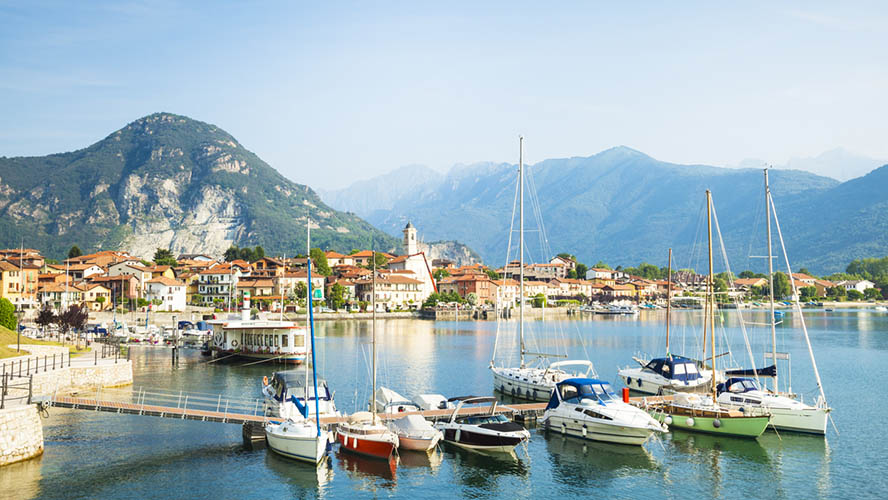
Cannobio
After briefly passing through Swiss territory to go around the north of the lake, we enter Piedmont on the western shore, and the small town of Canobbio. This is a small coastal town of Roman origin, with several points of interest, including the Palazzo della Ragione, the Comunale tower, and the Rocca Vitaliana, a strange castle which stands atop an islet on the lake. You will see it as you leave the town towards the south. Canobbio has a blue flag beach.
Verbania
Continuing back towards the south, we arrive at the area’s main town, Verbania (30,000 inhabitants). Verbania’s main claim to fame is the Villa Taranto botanical garden, designed in the 1930s by a Scot descended from a Duke of Taranto. The garden has 20,000 varieties of plants and around seven kilometres of paths.
In addition, Verbania is famous for its gulf (the Gulf of Verbania), which cuts inland westward from the Borromeas Islands. Here lies the much smaller Lake Mergozzo, alongside the charming village of the same name, which appears a world away from Lake Maggiore. Verbania’s port offers boat trips, as well as ferry crossings to the Borromeas Islands.
Stresa
This delightful town is close to Verbania. Stresa has attracted famous people throughout history, from politicians to to writers like Ernest Hemmingway. In addition to its quiet streets which have served as the location for several films, Stresa has several villas that lend a certain prestige to the town. The most famous, the Villa Ducale, dates from the eighteenth century. There is also a small beach where you can take a dip in the lake.
In Stresa, another cable car takes visitors on the 20-minute ride to the top of Monte Mottarone, with its small ski station, at an altitude of 1,492 metres.
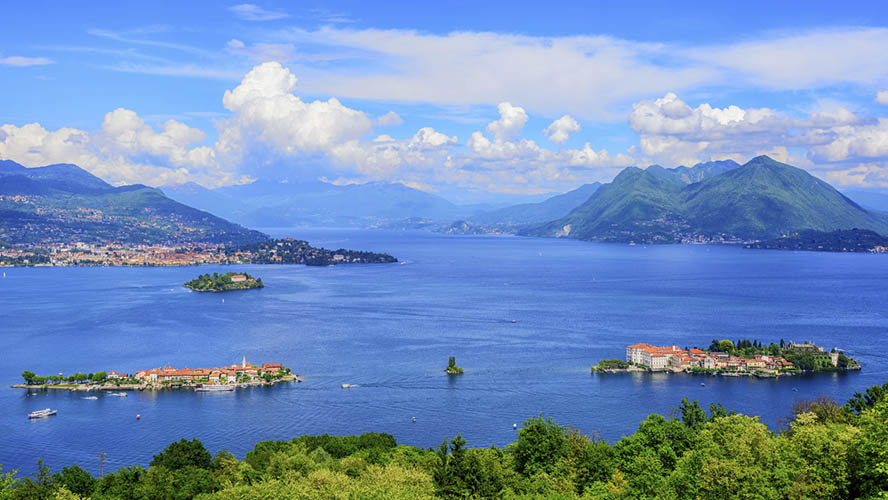
The Borromeas Islands
Stresi lies just behind the Borromeas archipelago, Lake Maggiore’s three islets. If you would like to visit the islands, boats depart from the port of Stresa (Piazzale Lido), to each island individually, or to all three.
- Isola Bella is the most famous of the three. At its highest point stands the Borromeo family’s Baroque palace (Palazzo Borromeo), with its outstanding gardens designed by the finest artists. The gardens boast terraces, fountains, grottos and exotic plants. The 10 terraces leading down to the lake are a truly awe-inspiring sight. Naoleon Bonaparte and Benito Mussolini have been among the inhabitants of this pearl of Lake Maggiore.
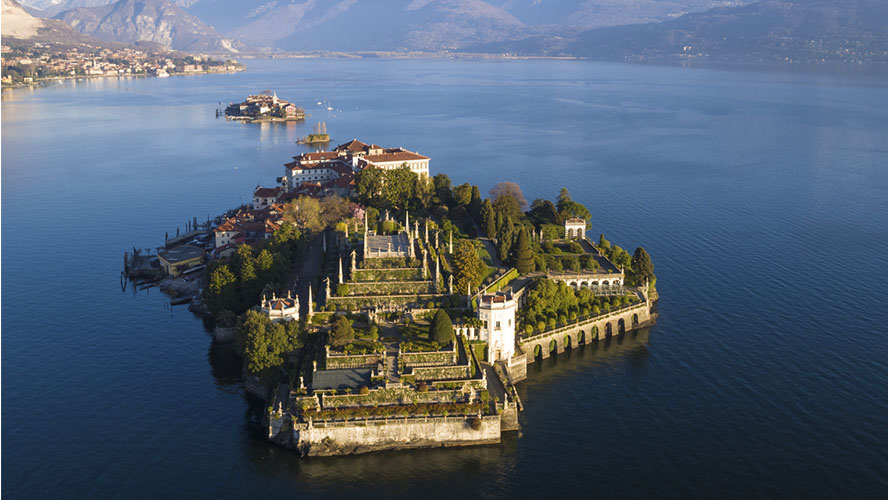
- Neighbouring Isola dei Pescatori (Island of Fishermen) is still inhabited by around fifty people, and is quite humble, unlike its opulent neighbours. Almost the entire island is a small seafaring community dotted with little restaurants where you can sample fish straight from the lake. Here too, you will find a typical street market where you can buy locally produced craft items.
- Isola Madre (Mother Island), a little further to the north, and the largest of the three Borromeas Islands, is home to another palace belonging to the Borromeo family. The botanical garden here has some of Italy’s tallest palm trees. The island’s fauna is somewhat unusual — ranging from peacocks to pheasants and parrots.
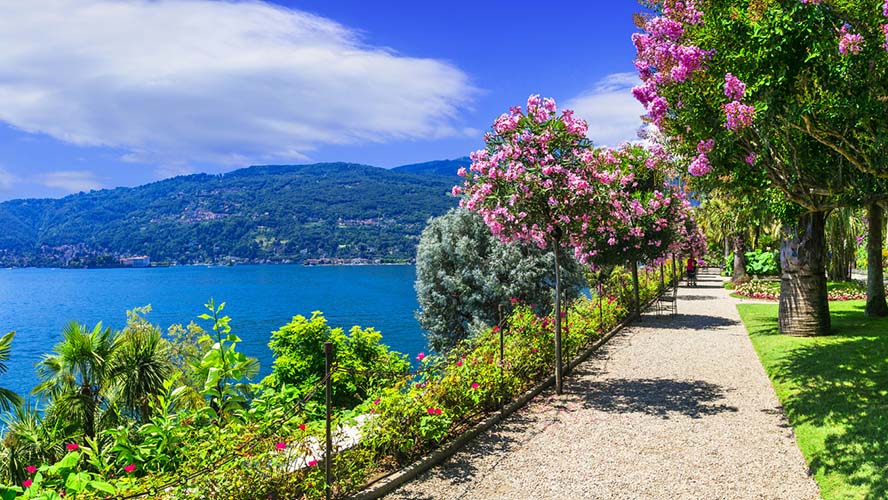
Arona
Concluding our circuit of Lake Maggiore at its south-western end, we arrive at the town of Arona, one of the area’s largest towns with almost 15,000 inhabitants. Archaeological explorations have revealed that its origins are pre-Roman. Arona is a pleasant, traditional Italian town, with narrow cobbled streets and colourful houses. Its attractive Lake Maggiore shore could be anywhere in the Mediterranean. Arona’s Colegiata de la Natividad dates from the fifteenth century, and the Piazza del Popolo, down towards the shore, is the heart of the town.
One of Arona’s principal landmarks is the enormous seventeenth-century statue, the San Carlo Borromeo or Sancarlone, dedicated to Cardinal San Carlos Borromeo, a reformer of the Catholic Church. The astonishing thing about the Sancarlone is its size: at over 35 metres tall, it is the tallest statue in Italy, and the second-tallest in the world after New York’s Statue of Liberty. Visitors can go up into the head of the colossus.
Arona commands one of the best views of Lake Maggiore, with Angera’s Rocca Borromeo and the Alps in the background.
Further information:
How to get to Lake Maggiore:
- By car: this is by far the best way to visit Lake Maggiore, as you can make as many stops as you like. The far southern end of the lake is around 60 km from the centre of Milan (an hour’s journey) and 18 km from Milan-Malpensa airport, where you can also hire a car.
- By train: railway lines run along both banks of Lake Maggiore, so it is easily reached by train from Milan. The service is run by regional railway companies, and you can catch a train from several stations in Milan. You might need to change trains in one of the towns, such as Sesto Calende or Gallarate. We recommend you consult Trenord (http://www.trenord.it/IT), the regional operator, to arrange your trip.
- By bus: in addition to the organised excursions you can book, you can also travel on the public bus service from Milan. Buses depart from the Lampugnano bus station, in the north-east of the city.




































































